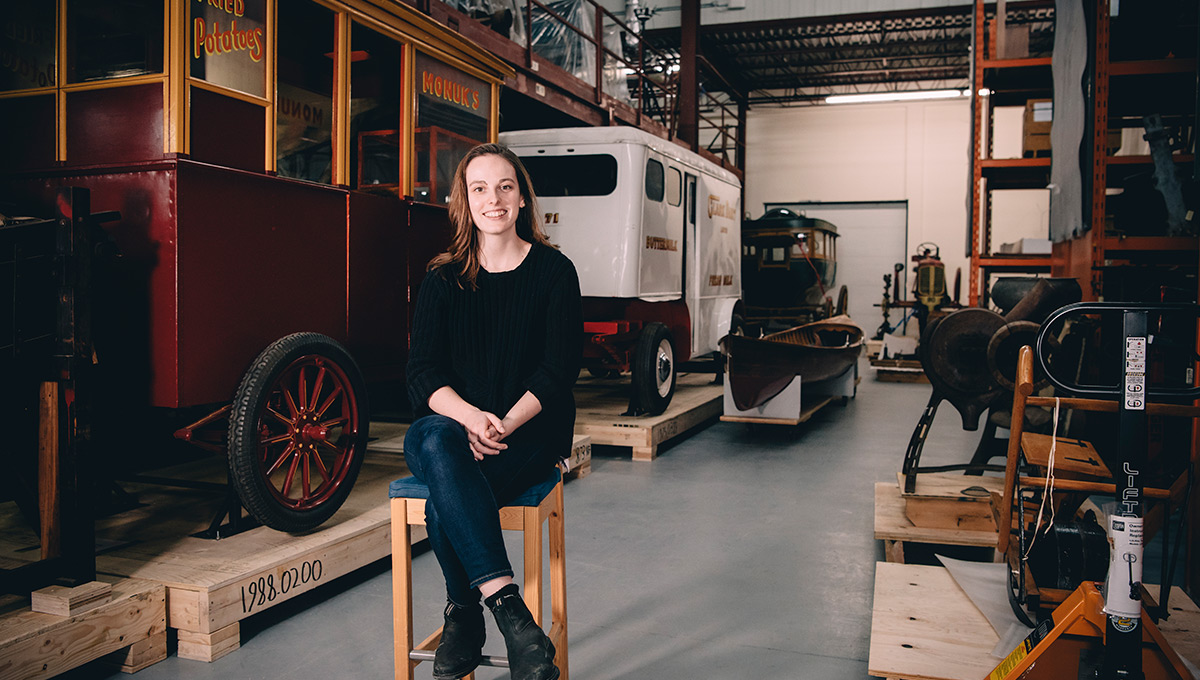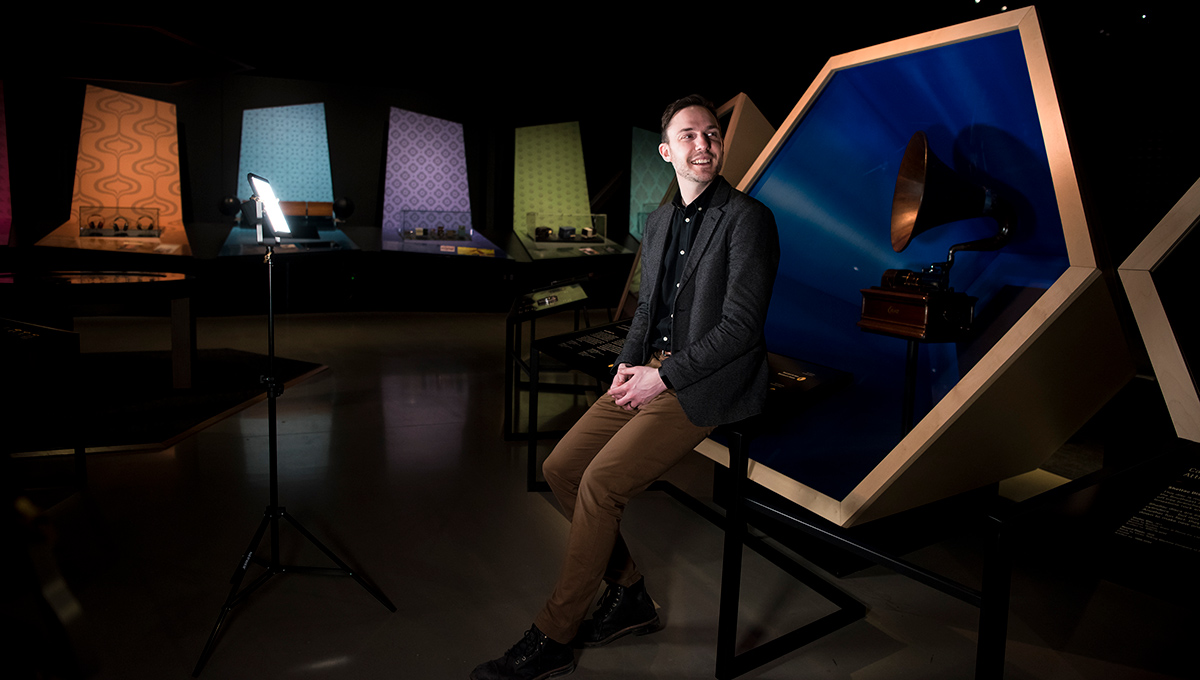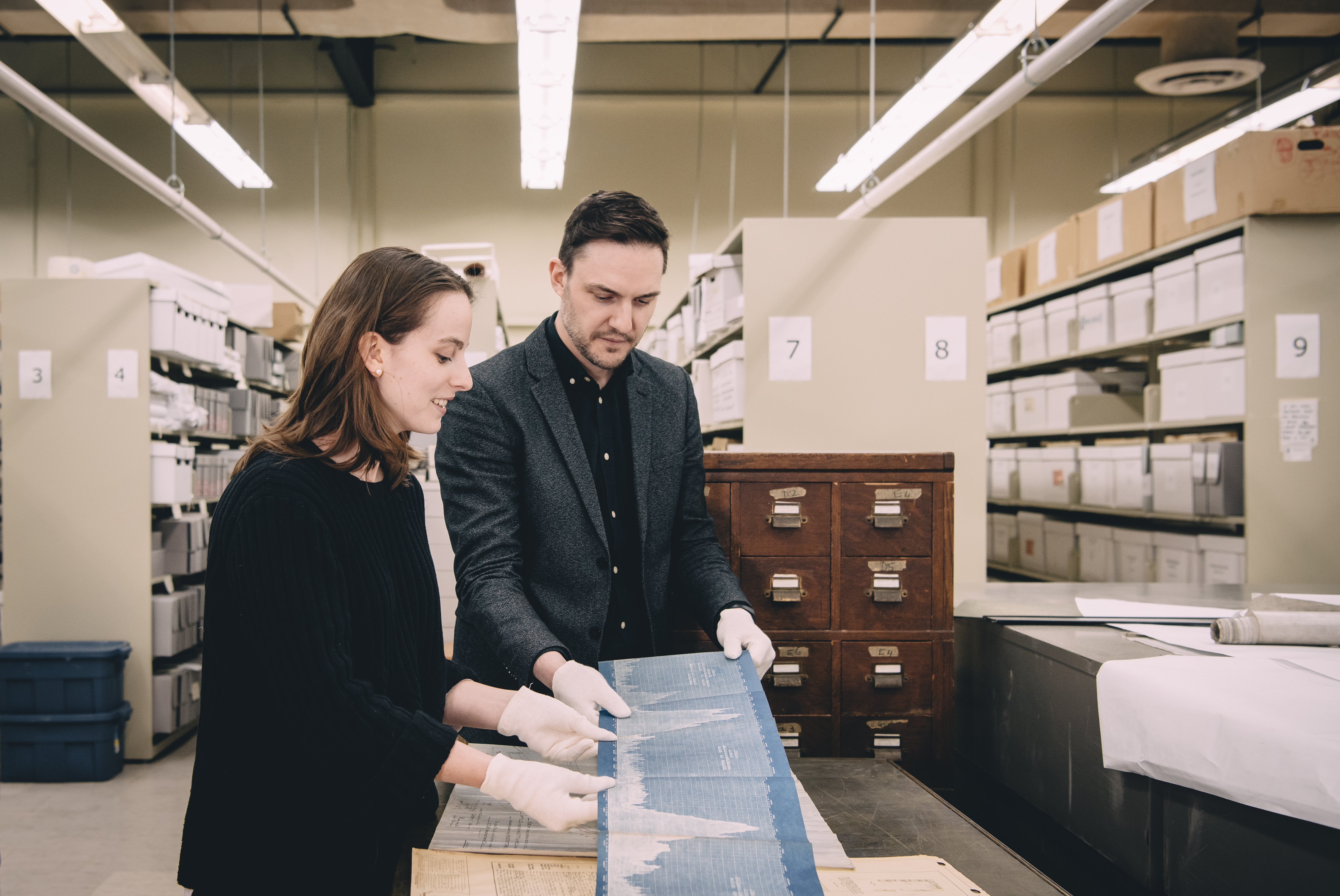Telling Stories of the Ottawa River Through Song
Forming the provincial border between Quebec and Ontario, the remarkable Ottawa River flows west for 1,271 kilometres from Lac Des Outaouais at the top of the Laurentian Mountains to the district of North Bay, where it pours into Lake Timiskaming.
Downstream from the Chaudière Falls, about halfway through the course of the river, is a space where rippling water curves around three islands – Kettle, Upper Duck and Lower Duck. From the river’s source to its mouth, the waterway has a centuries-long history of bustling trade and activity, but this section of the river has a particularly fascinating past. Located in the east end of the City of Ottawa, the place has evolved from a 19th century shadowy hot spot for seedy activity into a popular locale for Ottawans to partake in boating, fishing, cottaging and picnicking.

Fundamentally, Cristina Wood, the 2018-2019 Garth Wilson Fellow and an MA student in Public History, is interested in how particular spaces change through time, so naturally, she was drawn to the rich 20th-century history of this small, but a mercurial section of the river and the land that surrounds it.
Thus, for her Garth Wilson Fellowship, she intended to understand and then articulate how this Ottawa locale has been used both along the riverbank shores and on all three islands.
Having grown up in the area, Wood’s personal connection with the region compelled her to study the Ottawa River.
“I entered the master’s program fascinated with place history, on land – in Ottawa itself,” says Wood.
“The more I thought about the fluid boundaries of places, the closer I got to the river, its islands and its shores.”
She began exploring the environmental history and people’s relationships with this small section of the Ottawa River – one that she knows well.
“Picturing the inhabitants’ everchanging interactions with the river through the decades is definitely what drew me in.”
Wood arrived at Carleton from an undergraduate degree in History and Environmental Studies at Queen’s University, where she mostly focused on intellectual and cultural history. But she began to deepen her interest in environmental history in the first year of her Master’s in Public History here at Carleton. Through her research and reading, it became clear to Wood how deeply these two areas of historical study overlap. Between the first and second years of her MA, Wood had the opportunity to work as a research intern at the Canada Science and Technology Museum and Canada Agriculture and Food Museum. “There I was able to explore these converging fields, and my attention began to focus on the Ottawa River between 1880 and 1900, for which I built a little digital exhibit.”
This experience motivated Wood to become more engaged with the museum world.
“Knowing that I had only scratched the surface of the collections at Ingenium, and spending time with the team there, I decided to apply for and was fortunate enough to receive the Garth Wilson Fellowship which facilitates the kind of learning, skills and research that really interests me.”

The Garth Wilson Fellowship
The Garth Wilson Fellowship is offered by Ingenium, the corporate family which includes three of Canada’s national museums – the Canada Science and Technology Museum, the Canada Aviation and Space Museum and the Canada Agriculture and Food Museum – and Carleton University’s Department of History.
It celebrates History’s collaboration with Canada’s Science and Technology Museum and was established in the memory of Garth Wilson (1960-2010), a brilliant advocate of museology dedicated to public history, transportation history and material culture who served as the curator of Transportation at the museum from 1989 until 2010. In honour of Wilson’s much-cherished life and career, the fellowship affords a graduate student in Public History with the spectacular opportunity to participate in collaboration with a national museum.
As the recipient for 2018-2019, Wood has been paired with Dr. Tom Everrett, curator of Communications at Ingenium, who oversees Canada’s national collection of communications technologies.
“My role is to collect and preserve artifacts that can help tell the story of the historical development of printing, telegraphy, telephony, radio, television, photography, cinema and mobile communications in Canada,” explains Everett, who is also an adjunct professor in Curatorial Studies in the Institute for Comparative Studies in Literature Art & Culture (ICSLAC) at Carleton. His CU ties do not end there – he also completed his PhD (ICSLAC) and previously taught in the School of Journalism and Communications.

As a graduate student, Everrett focused on the intersection of sound studies, material culture studies and public history – an exploration he continues every day in his professional career as he works on developing new sound-based methodologies for museum research and exhibitry.
His most recent exhibition projects include two permanent exhibitions at the newly re-opened Canada Science and Technology Museum called Sound by Design and Wearable Tech.
While at first glance Wood’s research and fascination with the history of a particular leg of the Ottawa River may not seem to comfortably correlate with Everrett’s expertise on sound technology and culture, fascinatingly, Wood dovetailed these seemingly disparate scholarships using an experimental research methodology known as “sonification.”

Sonification – Storytelling Through Sound
For her project, Wood tells the history of the evocative Ottawa River space by expressing the information in what is surely a novel sensory experience for most of her audience.
Instead of a written paper, her research discoveries are composed through sound. This process is referred to as “sonification,” and despite its distinctiveness, it is a rather pragmatic choice to communicate the undoubtedly cacophonous history of this restlessly developing space on the Ottawa River.
“In the same way that data visualization assigns a legend, a line or a colour to represent a kind of data, the practice of data sonification assigns an auditory value,” says Wood.
“So numbers become scales of pitches, volumes, instruments and so on.”
Wood sonified the code by creating three songs, each representing a different period and aspect of the river place. She sees boundless potential in what data sonification can do for historical stories and public history by captivating audiences through a lucid form of storytelling.
“My approach involved the notion of enchantment – previously explored in the discipline of archaeology more than in history – and exploring how fragments of the past can produce enchanting, memorable, emotional engagements for audiences,” she says.
In producing this unique sensory experience, Wood readily admits there have been moments of discomfort as she has attempted to recalibrate her research muscle memory which has been honed for years by exclusively penning traditional essays. “Numerical data, in the forms that I was able to sonify, was not something I had focused on before, and it was a complex, but an inspiring process,” she explains.

The Project
Wood’s datasets scrutinize a variety of historical information of the Ottawa River site, and each specific researched dataset playfully expresses through an individual song how the residents on both shores have known this section of the river through time.
Her first song, On the Water, (listen) harmonizes boat schedules over 24 hours at the height of summer in the 19th century. To do this, she had to choose which instruments, chords, volume, veracity, and how many bars best represent each piece of her data. For example, to convey the travel of a smaller ferry boat, the sounds are lighter and adagio, but when a large steamboat takes off, the music becomes much heavier. As the day gets busier with boat activity, the music gets louder, while at night, as business peters off for the day, the music becomes quieter and increasingly tranquil.
Her second song, Hearing the River’s Flows, (listen) tells the story of 97 years of hydrometric measurements, i.e., water levels, on the section of the Ottawa River. The melody crescendos in times of flood and then resolutions into a more consistent, mellow tempo as the river regulates from one season to the next. Concurrently, this song also tells a tale of flooding, pollution and dredging.
“In all cases, I have had to select these datasets because they were what I could access and easily digitize. It has been a gift to focus on data sonification because I’m paying attention to things I would have passed over as a researcher, having always looked for textual records and stories.”
Her final song, Sounds of Industry, (listen) is the audification of the physical data of a 1932 pulp sample from the E.B. Eddy factory site.
Although she is undeniably an innovative and skilled researcher, Wood is quick to remind us that she is not a professional musician.
“These do not necessarily sound like expertly composed musical pieces because while I’ve made some aesthetic choices, the parameters of the data and the code are the forces determining the outcome,” she says.
“My songs, are all available on my Songs of the Ottawa website, and I would love to hear from readers and listeners through that platform. The site also includes a written reflection on the research and creation process.”

With the release of Wood’s data-informed river songs, it is worth taking a moment to reflect on the power of innovative storytelling. Wood’s project for the Garth Wilson Fellowship is a fascinating example of how we can tell old stories with new technology. Not only does this offer the opportunity to articulate our experiences through riveting means, but it also opens these stories to a wider audience.
“Previously, the data I worked with could only be accessed visually and were not easily understood. My experiment with the ‘new,’ bringing in the tools of the digital humanities, came from a place of wanting these stories to be accessible to different audiences,” says Wood.
“A major benefit of data sonification for me is the accessibility factor – both for comprehension by a variety of audiences, but also de-emphasizing the visual, which is usually the default for historical sources and information.”
As a storyteller who has a natural desire to enchant her audiences, Wood’s larger goal is to make people, herself included, think more about how we tell stories and explore what captivates us.
“In sonifying some of the stories . . . I’m hoping that the sense of the river as a dynamic place will stick with readers and listeners.
“If they are not into the ‘Songs of the Ottawa,’ maybe they’ll be drawn into the accompanying written stories of industry, trade and recreation on the river. Well-told stories evoke feelings and questions, and that is what I would aspire to!”
Thanks to her 2019 Garth Wilson Fellowship, which has facilitated her partnership with Everrett and Ingenium, Wood has had the support required to complete this complex project.
“For me, collaboration has meant incredible support from the librarians and archivists at Ingenium, as well as from everyone in the curatorial division there. Through the fellowship, I had the opportunity to present my research to the wonderful professionals working in other areas at the museum and incorporate their reactions into my work.
“Tom was very accommodating in guiding my thinking about sound studies and supporting the experiment. Anna Adamek, director of the Curatorial Division, was also been immensely supportive in ensuring that I have access.
“Overall, the museum’s staff are simply so dedicated to supporting researchers and encouraging projects like mine at every stage. It was wonderful to have been welcomed into the fold through this fellowship and to have had feedback on my project as it developed.”
Wood’s three songs reveal an untold tale of our public space using an interactive method which allows us to process and understand our regional history with a poignant sensory vigour. Her hauntingly beautiful songs have successfully painted audiences a sonic portrait of the vibrant Ottawa waterway in a way that intimately captures its ever-flowing essence.
For this project, Cristina Wood was the recipient of the University Medal at the Master’s Level awarded at the 2019 Spring Convocation.
Additional Reading
- The Ottawa River’s history re-told in musical notes, Ottawa Citizen, June 10, 2019